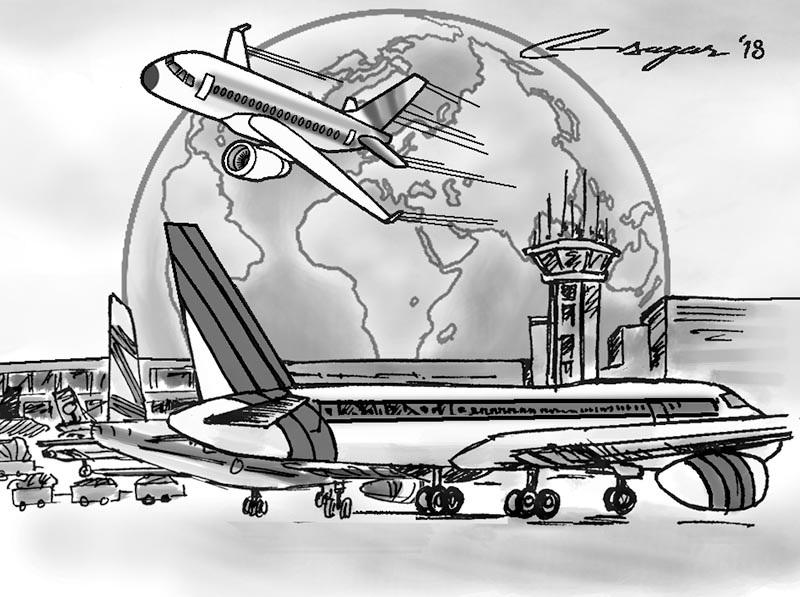ICAO Day marked with much gusto, keeping air safety shortcomings under wraps
Kathmandu, December 8
The zeal and fervour with which the Ministry of Culture, Tourism and Civil Aviation (MoCTCA) and the Civil Aviation Authority of Nepal (CAAN) celebrate December 7 as the International Civil Aviation Organisation (ICAO) Day contrasts starkly with that used to implement critical ICAO provisions on air safety in Nepal.
The ICAO Day celebrations, not only limited to paid advertisements in some broadsheets, was also marked by a minister-led walkathon to the sole international airport and a workshop ending with a late night cocktail dinner at an upscale hotel.
A review of online publications not only in South Asia, but also Thailand, where ICAO Asia-Pacific regional office is based, and Canada which houses the ICAO’s headquarters, however, find no mention of the ICAO Day celebrations, let alone full-page paid adverts.
This clearly shows that Nepal’s practice has remained unique and essentially transmogrified into an alibi for wining and dining on a cold winter night, according to stakeholders.
On the other hand, the prevailing aviation practices in Nepal are certain to cause heartburn in the European Union if not the ICAO. For instance, the investigation procedure after the recent tragic crash of Lion Air B737-Max in Indonesia provides an interesting contrast with the prevailing practices of air crash investigation in Nepal.
“For instance, in Indonesia, within a week of recovering the flight data recorders from the sea floor the entire readout as well as analysis conducted in Jakarta was in the public domain. However, the black boxes of the US Bangla flight 211 crash in Kathmandu were held for months by MoCTCA investigators as they took time to choose a facility from among several options abroad to take the black boxes for investigation,” a senior ministry official shared.
Though a relevant ICAO standard specifically requires timely dissemination of information pertaining to crash investigations, the US Bangla crash investigation report, whose parts were leaked, is still out of public domain, according to the official.
Though CAAN’s regulations warrant aviation service providers like airline operators to identify a high-ranking executive who can be held accountable for safety lapses, it is strangely unwilling to itself identify an executive within its
organisation who can be held responsible for failing ICAO audits earlier that has resulted in the ignominious significant safety concern tag for four years and the continuing European Commission’s ban called the air safety list, a source at CAAN added.
Aviation experts believe the EC’s continued demurral on the prevailing state of Nepal’s aviation safety oversight clearly points towards incompetence of CAAN regulatory executives in performing their tasks effectively and efficiently.
“There is nothing that prevents CAAN safety inspectors for aerodromes and control tower services from performing their critical duties dispassionately even if it leads to airport closure on safety grounds except fear of retribution by their future bosses or expectations of favour in terms of attractive posting and foreign jaunts,” an expert told The Himalayan Times.
Officially, Nepal Airlines Corporation is outside CAAN’s organisation structure, and yet enforcement actions are not being taken by CAAN due to sheer ineptness, an airline executive said. “Else, what could be preventing CAAN from suspending NAC’s air operator certificate for its continued inability to close non-trivial safety findings that have forestalled the Korean Civil Aviation Authority’s safety audit leading to flights to Incheon airport by its idle wide-body Airbus-330 jets?” he questioned.






